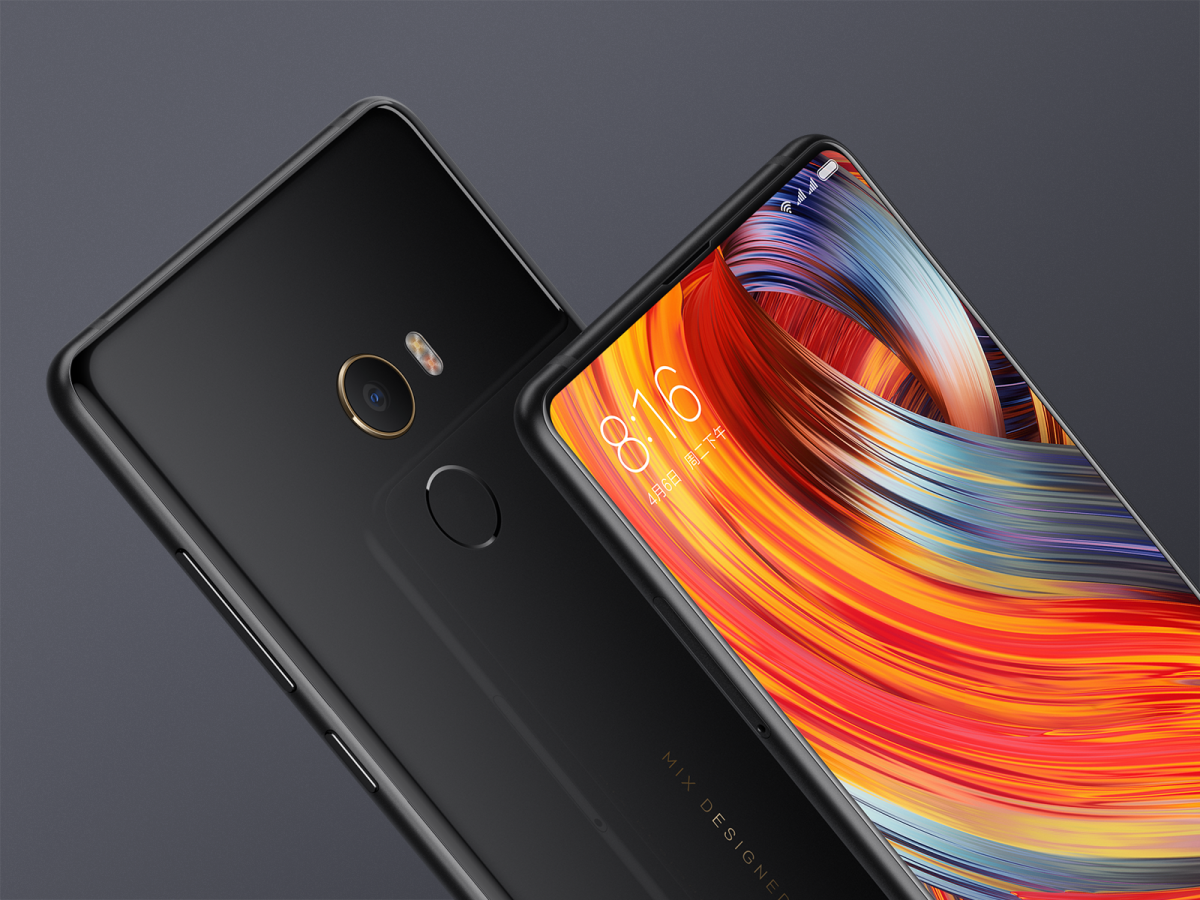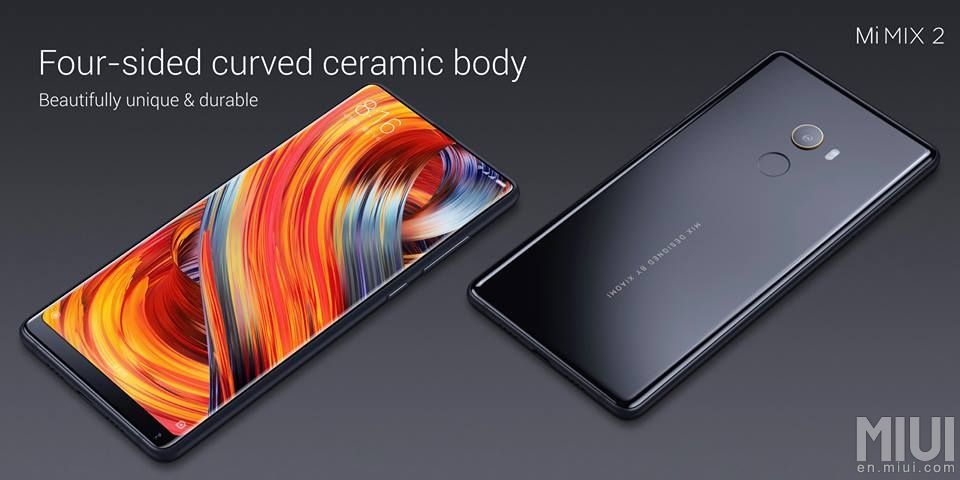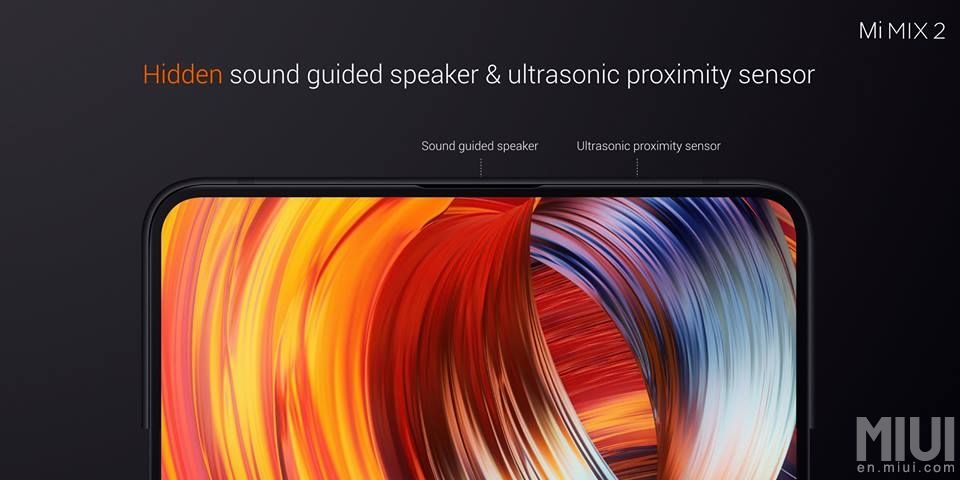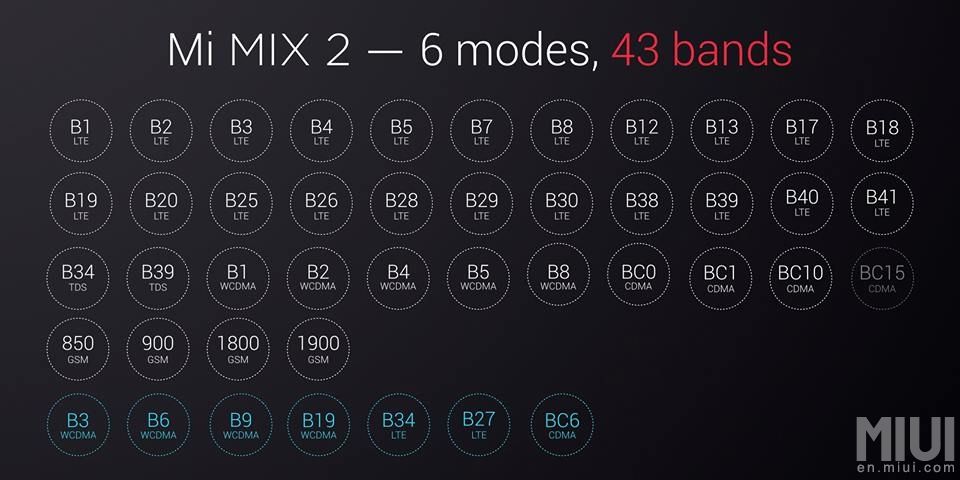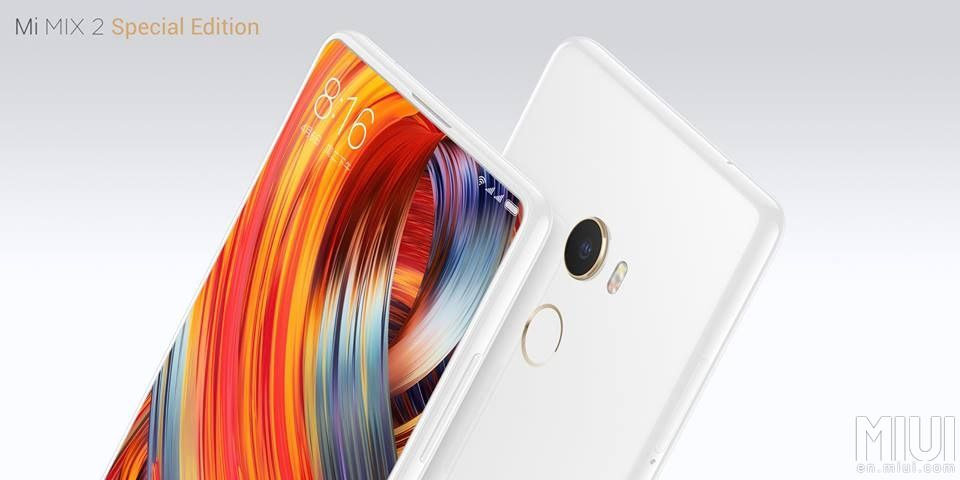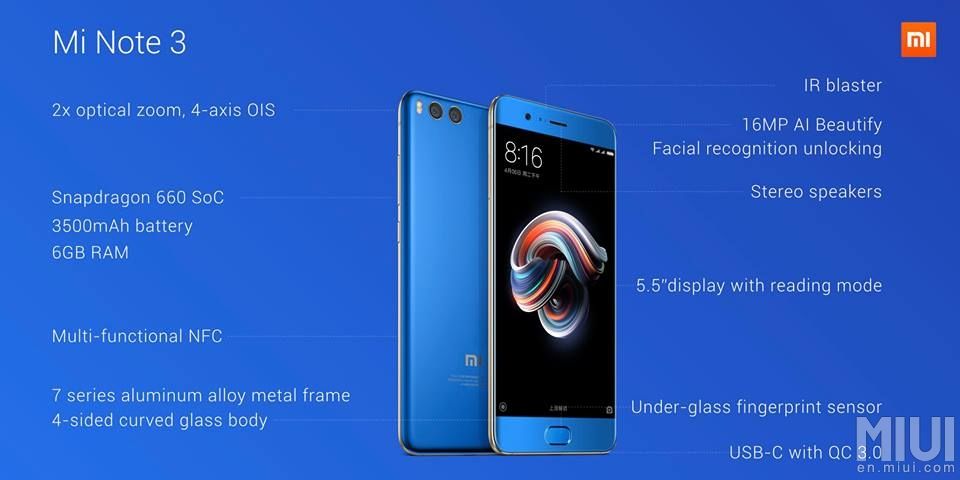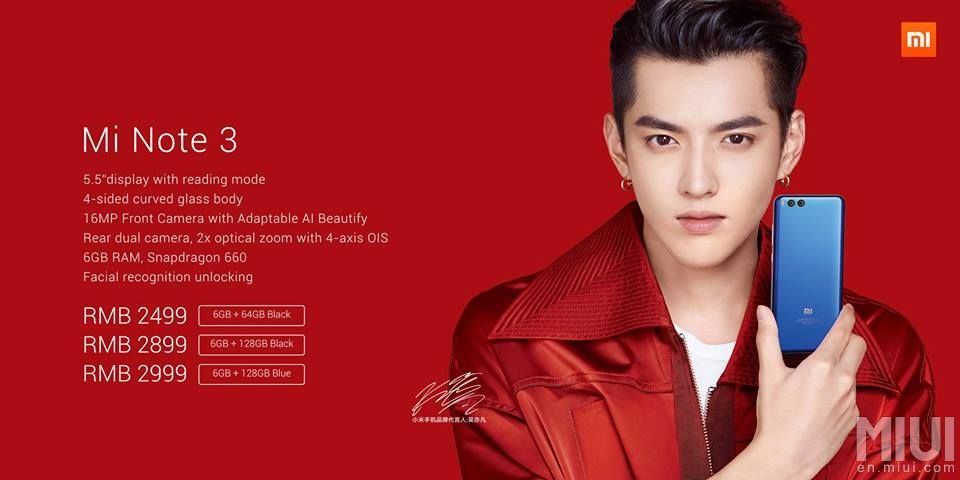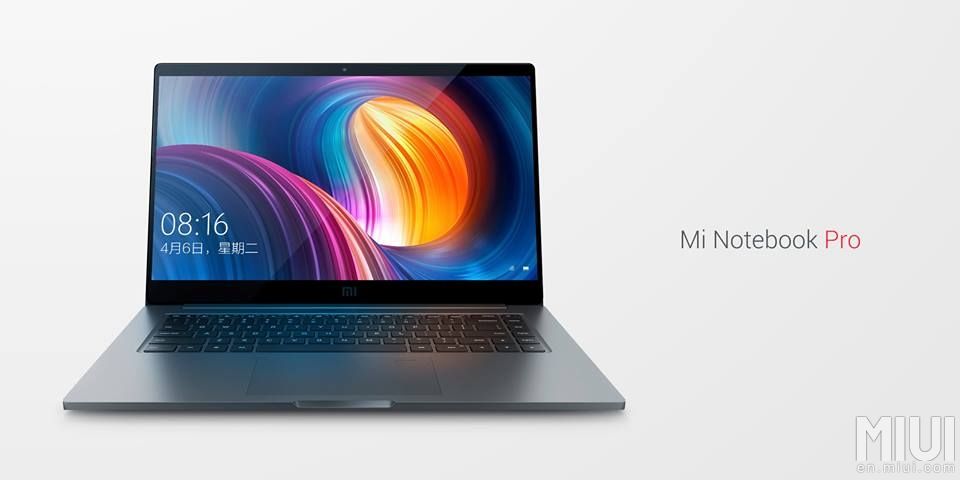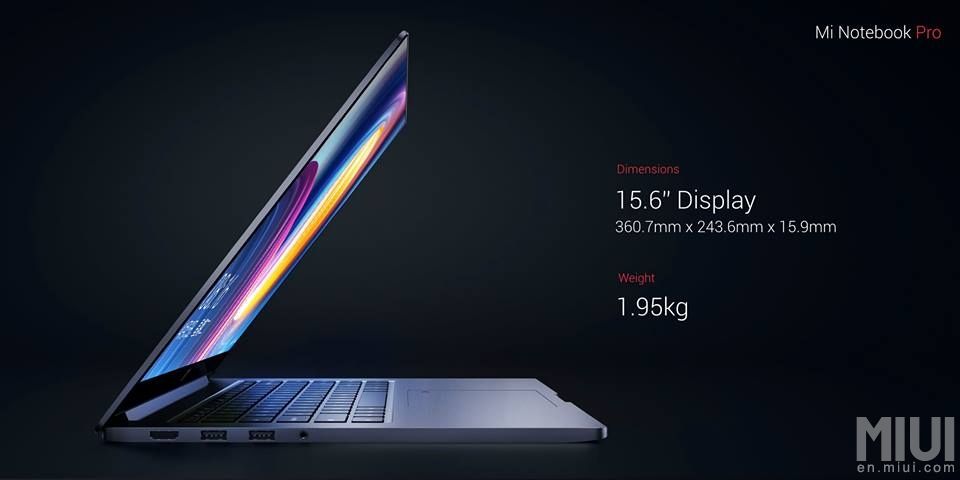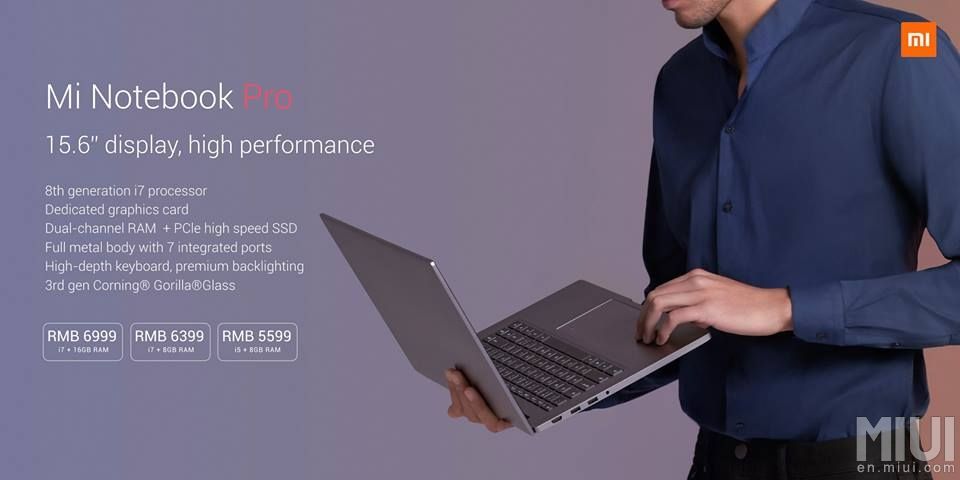At an event in Beijing, Xiaomi has unveiled the successor to the Mi MIX, one of the most interesting phones of 2016. The new Mi MIX 2 improves upon the bezelless trend that its predecessor pushed back into the mainstream, at a time when every other major OEM is also busy shaving off the extra bezels. Xiaomi also took the stage to announce the new Mi Note 3 and the Mi Notebook Pro.
Mi MIX 2
The Mi MIX started off as a "concept phone", one that only intended to give everyone a glimpse of what phones of the future would look like. And to that extent, it was successful, as it spurred on a generation of smartphones that went on ahead to emulate the bezelless design. While Sharp would be credited for bringing the world its first bezelless smartphone, Xiaomi gets the credit for making bezelless the trend to follow. Xiaomi even claims that the Mi MIX was the first Android phone with a 17:9 aspect ratio screen and rounded display corners, which in turn spurred Google to update the Android Compatibility Definition Document to allow screen aspect ratios beyond 16:9 as well as rounded display corners.
The Mi MIX 2 evolves from the concept phone design into a more user-friendly phone that seeks to appeal to a wider consumer group. The Mi MIX 2 comes with a 5.99" LCD panel that stretches edge-to-edge on three sides, with a narrow chin on the bottom. The screen has a resolution of 2160 x 1080 pixels and an aspect ratio of 18:9, and also sports rounded corners. The bump down in screen size (as compared to the 6.44" on the Mi MIX) as well as a smaller chin has helped make the Mi MIX 2 11.9% smaller than the Mi MIX.
The Mi MIX 2 switches out the piezoelectric speaker solution from the Mi MIX, and uses a smaller speaker hidden between the top edge of the phone and the screen. The front camera remains on the bottom chin, and the device also continues along with its use of an ultrasonic proximity sensor.
On the inside, the Xiaomi Mi MIX 2 packs quite the punch with its top level specifications. The phone is powered by the Qualcomm Snapdragon 835 SoC and comes in variants that go as high as 8GB for RAM and 256GB for internal storage. The phone is powered by a 3400 mAh battery and runs on Android 7.1.1 Nougat with MIUI 9 on top. For its cons, the phone does skip out on the headphone jack and also lacks any IP rating.
The rear camera on the device is the 12MP Sony IMX 386 with f/2.0 aperture and 4-axis OIS.
Another interesting highlight of the Mi MIX 2 is its band support. The Mi MIX 2 is a "global" smartphone, supporting a total of 43 network bands. While it is unlikely that the phone will be officially sold in the USA, the band support does make it a viable alternative to import from other regions for use in the USA.
The Mi MIX 2 comes in three RAM plus storage variants, in addition to a ceramic special edition. The 6GB + 64GB variant costs CNY 3299 ($506); the 6GB + 128GB variant costs CNY 3599 ($552); while the 6GB + 256GB variant costs CNY 3999 ($613). The Mi MIX 2 Special Edition sports a ceramic unibody, which Xiaomi claims is a first for any smartphone, and will cost CNY 4699 ($721) for its 8GB RAM and 128GB storage.
The Mi MIX 2 will be available in China from 15th September. The phone will make its way to selected global markets at later dates, and as confirmed by Xiaomi India's Managing Director, Mr. Manu Jain, the Mi MIX 2 will also make its way to India.
Mi Note 3
The Xiaomi Mi Note 3 takes the previously launched Xiaomi Mi 6 and bumps up the screen size to 5.5"; and bumps down a few key specs. The design language of the device is shared across the Mi 6, meaning you get a device with a glass and metal build where the stainless steel mid frame sits sandwiched between four-sided curved glass on the front and back.
On the inside, one of the key changes is in the SoC, as the Mi Note 3 does not use the flagship Qualcomm Snapdragon 835 platform. Instead, the Mi Note 3 uses the Qualcomm Snapdragon 660 SoC, which should provide a decent combination of power and efficiency if previous generation Snapdragon 65x devices are anything to go by. The batter gets a bump up to 3500 mAh to help power the bigger screen, although there is still no headphone jack on the device, sadly.
The Mi Note 3 shares its camera setup with the Mi 6. You get a 16MP front camera, and a 12MP + 12MP dual rear camera setup that utilizes a wide angle lens and a telephoto lense and allows for bokeh shots.
The Xiaomi Mi Note 3 will be available in China starting from 12th September, and will be priced from CNY 2499 ($384) onwards depending on the storage, RAM and even color. Availability outside of China for this device remains unknown.
Mi Notebook Pro
The Mi Notebook Pro is Xiaomi's answer to the needs of professionals looking for a high-performance yet portable laptop.
The Mi Notebook Pro comes with a 15.6" FHD display protected by Corning Gorilla Glass 3. On the inside, the top variant of the Mi Notebook Pro comes with the latest eighth-generation Intel Core i7 quad core processor, with a max clock speed of up to 4.0GHz. This is complemented by NVIDIA GeForce MX150 graphics card and a Dual channel 2400MHz DDR4 RAM. For storage, the laptop comes with a 256GB PCIe NVMe SSD as well as one free SATA SSD slot that gives users an option to expand its storage as per their requirements. The laptop also includes a fingerprint sensor integrated into the touchpad to aid in biometric authentication. All of this is powered by a 60Wh battery.
The Mi Notebook Pro runs on the Chinese version of Windows 10, and comes preloaded with full licensed copies of Microsoft Office and Kingsoft's WPS Office. The Mi Notebook Pro comes in a total of three configurations of processor/RAM/storage:
- i7 + 16GB + 256GB: CNY 6999 ($1073)
- i7 + 8GB + 256GB: CNY 6399 ($981)
- i5 + 8GB + 256GB: CNY 5599 ($858)
It is unlikely that the Mi Notebook Pro will be made available outside the Chinese market.
Xiaomi's launch event ensured that it got its share of the limelight before Apple marched forwards with its launch event. With the Mi MIX 2, Xiaomi even has a product that is well prepared for any surprises that Apple could pull with the next iPhone. And with the increased availability as well as wider band support, it does seem that Xiaomi may have bigger plans for the Mi MIX 2 after all.
What are your thoughts on the Xiaomi Mi MIX 2, Xiaomi Mi Note 3 and the Xiaomi Mi Notebook Pro? Let us know in the comments below!

